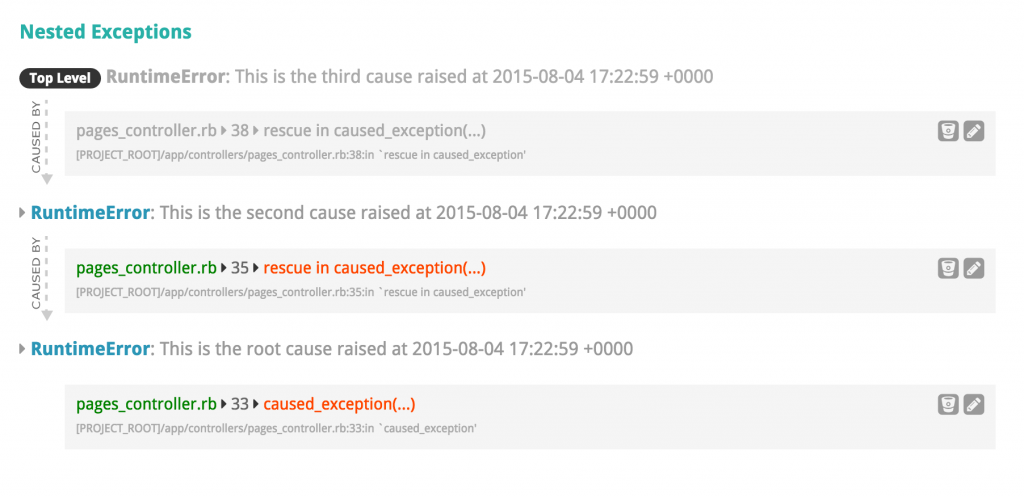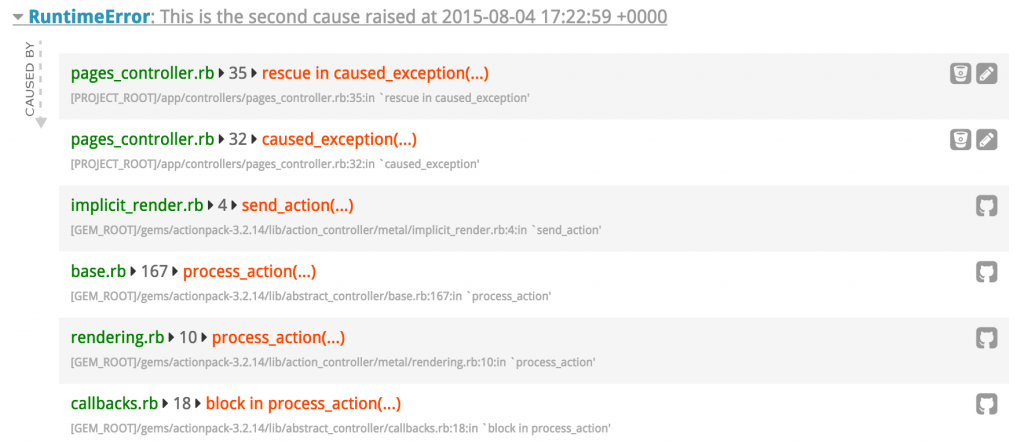What happens when you rescue an exception and re-raise another one? It used to be that the original exception was lost forever. But since Ruby 2.1, you can access these nested exceptions via the cause method.
I've already published a more detailed look at causes, but for now a simple example will work. In the code below we raise three nested exceptions, then use the Exception#cause method to access them.
def caused_exception
begin
begin
raise RuntimeError.new("This is the root cause raised at #{ Time.now }")
rescue
raise RuntimeError.new("This is the second cause raised at #{ Time.now }")
end
rescue
raise RuntimeError.new("This is the third cause raised at #{ Time.now }")
end
end
begin
caused_exception
rescue => e
puts e # This is the third cause raised at 2015-08-04 10:07:11 -0700
puts e.cause # This is the second cause raised at 2015-08-04 10:07:11 -0700
puts e.cause.cause # This is the root cause raised at 2015-08-04 10:07:11 -0700
end
Viewing causes in Honeybadger
As of today, any error reported to Honeybadger will have its cause information attached. You'll find it right underneath the main backtrace in a section titled "Nested Exceptions". The only thing you need to do is to make sure that you're running the latest version of our gem.
Here's what the exception shown above would look like:
Each cause has its own separate backtrace which you can expand by clicking. You have direct links to your git repo and to open the file in a local editor, just like the "normal" backtrace.




